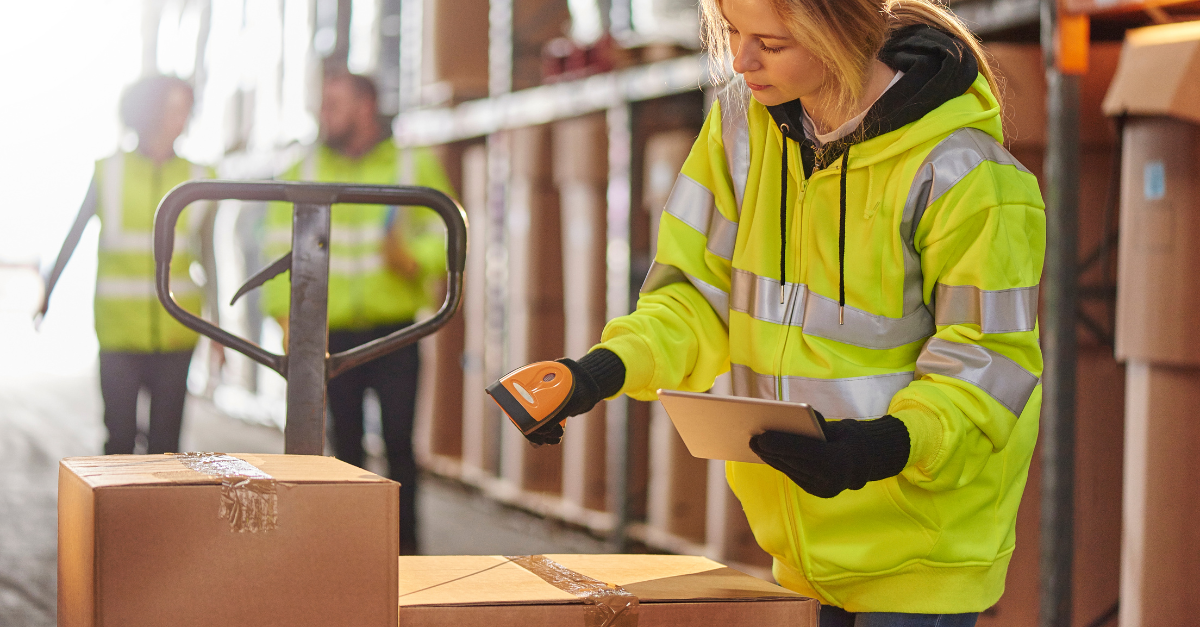How AI Hardware Rollouts Depend on Precision Logistics

AI isn’t just software anymore. Behind every breakthrough in machine learning, generative AI, or advanced analytics is physical infrastructure — servers, GPUs, networking equipment, and racks of high-value hardware that must be deployed at scale.
For hyperscalers and enterprises racing to build capacity, the challenge isn’t only technical. It’s logistical.
Successful AI hardware rollouts depend on more than transportation. They demand precision logistics: the integration of secure handling, white glove delivery, and chain of custody protocols that protect both timelines and multimillion-dollar investments.
The High Stakes of AI Hardware Deployments
When a data center rollout gets delayed, the cost compounds quickly:
- Lost compute time slows development and customer adoption.
- Idle factory lines wait for the next generation of chips and boards.
- Missed market opportunities hand competitive advantage to faster movers.
In industries where downtime can cost millions per hour, logistics isn’t a back-office function. It’s mission critical.
Why Precision Matters
AI infrastructure is different from standard freight. These aren’t pallets of low-risk goods — they’re racks of servers, semiconductor equipment, and sensitive electronics that require:
- Secure transport to prevent theft or fraud in high-risk corridors.
- Temperature and humidity-controlled environments to protect sensitive components.
- White glove delivery to move and install equipment without damage.
- Chain of custody documentation for full visibility at every handoff.
Without these measures, the risk of disruption isn’t hypothetical — it’s inevitable.
Scaling at Speed
Hyperscaler rollouts don’t happen in neat, predictable cycles. A facility may require phased deliveries of hundreds of racks in one week, followed by secure warehousing until the site is ready for the next phase.
This is where flexibility and scalability in logistics become a competitive advantage. The ability to pivot between LTL and FTL, leverage cross-docking, or expand value-added services like kitting and pre-assembly can shave days off deployment timelines.
Building a Reliable Backbone for AI
As AI adoption accelerates, the companies that scale fastest will be those with logistics partners built for precision. The stakes are simply too high for guesswork.
The right logistics strategy ensures:
- Hardware arrives safely and on schedule.
- Facilities scale at the speed of innovation.
- Supply chains remain resilient in the face of global disruption.
Because in AI, innovation doesn’t start with an algorithm — it starts with a delivery.
AI hardware rollouts are redefining what supply chains can (and must) do. They’re not just about moving freight; they’re about enabling the next era of technology.
And in this environment, precision logistics isn’t a nice-to-have. It’s the foundation of growth.
If your business is scaling AI infrastructure, it’s time to secure a logistics partner who understands what’s at stake — and delivers with the precision your future depends on. Contact us today to learn how we can help manage your high-tech supply chain.
Ready to optimize your supply chain?
Contact us today to discover how JIT Transportation can take your business to the next level.
Related Articles

Kitting and Assembly Services: Building Brand Experience from the Inside Out
Kitting and assembly turn fulfillment into a brand experience, ensuring every bundle, component, and package is prepared with consistency and care as growing brands scale.

White Glove Logistics: Protecting Sensitive Equipment from Dock to Data Center
White Glove Logistics ensures sensitive, high-value equipment is handled with precision, visibility, and care from dock to data center to protect performance and trust.

Scaling Smarter: Why Flexibility Is the New Currency in Supply Chain Logistics
Flexibility—not just scale—is driving success in modern supply chain logistics and how agile networks give businesses a competitive edge.
